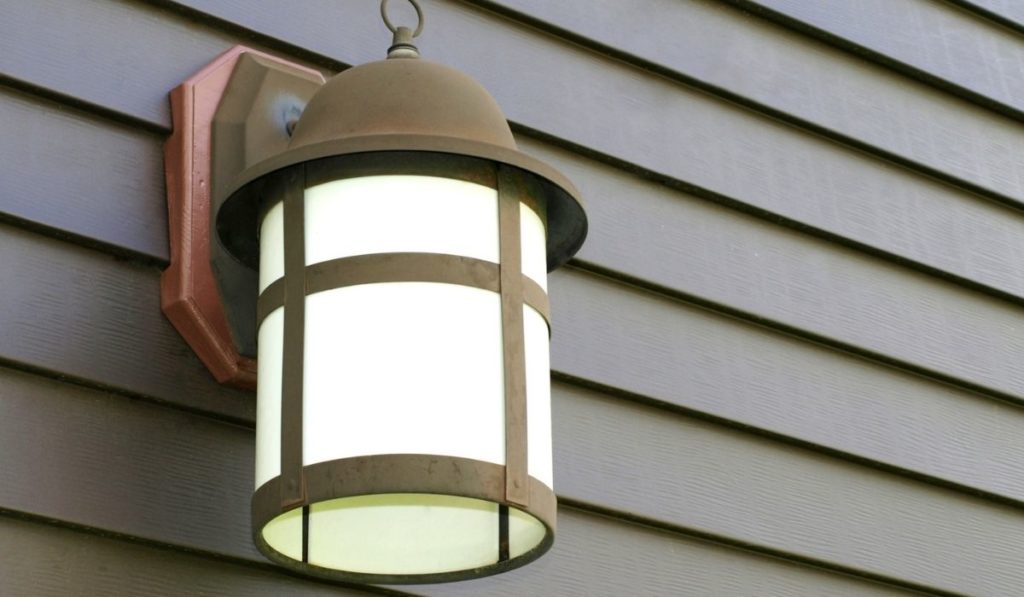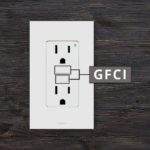Bugs and pests can be especially annoying when you’re trying to enjoy a pleasant evening outside in the backyard or on your patio. So what can be done to ward off these pests? A lot of it has to do with the lighting you use.
Bugs are attracted by warmth, brightness, and certain wavelengths of light. In terms of these factors, LED bulbs are the way to go. Opt for warm yellow or orange-ish LED bulbs. Using specialized bug lights is another way to keep the bugs away.
Lighting isn’t the only way to keep your patio clear of bugs. You can install a ceiling fan, use essential oils, and make sure your grass is cut and the yard is clean. These are factors which also play a significant role in keeping your outdoor area bug-free. Let’s take a look at how best to light your outdoor spaces and what other methods can contribute to a bug-free evening.
Which Lights Attract the Most Bugs?

It’s safe to say that not all kinds of lights end up attracting all types of insects. This comes with pros and cons. It means you can determine which sort of light to avoid for certain insects, but it also means it’s essentially impossible to find an option that doesn’t attract any bugs whatsoever.
This is why you should focus on reducing the amount of bugs outside rather than completely eliminating them.
Although many people prefer to use a bug zapper, it’s not exactly the most aesthetically pleasing option. That’s why an LED light, like this Feit Non DM LED Bulb (on Amazon), is probably the best way to go. LEDs will attract fewer insects with their warm light, and they also emit much less heat.
An experiment was carried out to determine what kinds of lights attract the most bugs. During the experiment, which lasted an entire summer, factors such as moonlight, weather conditions, and other factors were closely monitored.
According to the results, incandescent light attracted the highest amounts of insects. CFL lights followed in second place, and halogen lights came in third. Bug lights and warm LEDs took the last two spots, respectively.
Outdoor Lights for Your Patio That Won’t Attract Bugs
As found in the experiment we described, the lights that tend to attract the least amount of bugs were warm lights and warm LEDs.
Therefore, when going to pick lights for your home, try to go for warm yellow-orange LED bulbs like the LOHAS Bug Light (on Amazon). These will emit less heat and attract the least amount of insects. LEDs are also power efficient and can therefore reduce your power costs.
LED bulbs are less attractive to insects and bugs because they produce low heat, as well as long wavelengths of light. The ultraviolet radiation produced from these bulbs is also little to none.
These qualities make LEDs perfect for outdoor use, especially if you’re having an event outside. The worst type of bulbs you can use outdoors are the traditional ones due to their warmth. Warm yellow LEDs are indeed the best option, since yellow or orange tend to have longer wavelengths as compared to other colors.
Why Are Bugs Attracted to Light?

When an animal is attracted to light, it’s called positive phototaxis, and the opposite is called negative phototaxis.
As an example, nocturnal animals such as cockroaches and earthworms tend to move away from light, so they exhibit negative phototaxis.
You can probably take a guess which one applies to the bugs that are hovering around your patio. Most flying insects tend to show positive phototaxis.
There are some flying insects that can resist the urge to move towards the light, but insects such as moths and flies simply can’t help it. However, there is more than just the urge that is involved in attracting bugs toward lights.
We can break down the factors that actually make light attractive to these insects. Understanding the wavelength, heat input, and brightness can make it a lot clearer as to why certain insects are attracted to certain lights. Once you understand this, you’ll have a better idea of what kind of light to get for your home.
Wavelengths
Insects have a field of vision when it comes to color. They can only see certain colors. Blue or purple light tends to attract a lot of bugs, which is why those colors are used in a lot of bug zappers.
Extended wavelengths such as yellow or orange, meanwhile, are less visible to bugs. In fact, most of them are unable to see a red light at all. This is why yellow-tinted bug lights are gaining popularity.
Heat
The science doesn’t stop at wavelengths. Heat is another major factor that dictates how insects and bugs may feel about light.
Insects are attracted to warmth, and since most light bulbs emit not only light but also heat, it makes them an ideal spot for insects to gather. Mosquitos are an example of this; they revolve around lights not due to their color but rather their warmth.
Considering this, you will have to look at the heat output when you choose a bulb. If you’re trying to avoid bulbs that produce a lot of heat, stay away from incandescent and halogen bulbs, since they are known to produce a lot of heat.
Try going for something like LED or fluorescent bulbs; they produce much less heat when compared to the halogen ones mentioned earlier. Replacing your bulbs with LEDs will not only keep the bugs at bay, but it’ll also reduce costs on your electricity bill.
Brightness
The brightness of your light bulbs also plays a part in attracting insects. Simply put, the brighter your bulb is, the more attractive it’ll be to insects.
This is why you should look for bulbs that are sufficiently bright for your purposes but not much more than that. Otherwise, the bulbs will end up inviting bugs and insects.
By picking a light of the right size, you can avoid having a bunch of insects hovering around outside your house.
Other Methods for Keeping Bugs Away
When it comes to keeping your patio clear, especially in the summer, there is a lot you can do to help. Light and bulbs are a big part of it, but there are other techniques that can help you out:
Add a Fan
Adding a fan to your patio can make a significant difference in clearing out unwanted and annoying bugs and insects. Outdoor ceiling fans have gained popularity for exactly this reason.
Not only does the fan help in keeping the insects and bugs away, but it also provides you with a cool breeze. It’s a win-win. Fans are particularly helpful for warding off mosquitos and flies, both of which can be pretty annoying.
Remove Standing Water
It’s been found that standing water can easily become a breeding ground for mosquitoes and other insects. It’s therefore highly advised that homeowners clean up any standing water, which can be from rain or anything else.
If there’s a pool or anything similar near the house, it’s advised to replace and clean the water regularly to avoid having mosquitos.
Keep It Clean
While this does not come as a surprise, keeping your yard neat and tidy helps to reduce the amount of insects and bugs lingering around. Keep your shed and tools clean and make sure there aren’t any spots for insects to get into.
Along with that, have your grass cut and cleaned regularly; tall and overgrown grass can also invite mosquitos. Finally, make sure there aren’t any bushes or tree limbs up against your windows, since they can also help to bring in insects.
Clean the Gutters
Once again, cleaning is a major part of keeping your house free of insects and bugs. It’s advisable to regularly maintain your gutters and make sure they’re clean and functioning properly.
If the gutters are not properly taken care of, they can easily become a breeding ground for pests, mosquitoes, ants, and even earwigs.
Don’t Use Mulch
Avoid using mulch, because it can provide a comfortable environment for bugs and pests to live and grow in. It is recommended to keep mulch at least 12 inches away from the foundation.
It’s also advised to look into alternative materials such as gravel or rock. As an added bonus, gravel and rock are not only better for avoiding pests but also give a better visual aesthetic.
Add Plants
A very natural solution for repelling bugs is to use patio plants. Not only does adding plants help get rid of pests and bugs, but it also adds more visual beauty to your space.
There are different plants that help to keep away different kinds of bugs, so you’ll have to check which plants to get for your specific scenario.
As an example, chrysanthemums are good at keeping out cockroaches, ants, ticks, fleas, and even bedbugs. Marigolds and rosemary, meanwhile, can help to keep away mosquitos.
Use Natural Repellants
Natural repellents can also help to keep pests and insects away from your home and patio. These include essential oils such as Citronella, lemongrass, sweet orange, lemon eucalyptus, peppermint, lavender, cinnamon, and more. These oils have been shown to drive pests, flying insects, and bugs away.
If you choose to use these oils as a solution, be sure to check out different DIY recipes you can find over the internet. There are recipes available for all kinds of bug repellents, yard sprays, candles, diffuser blends, and more.
You can also purchase candles like the Cutter Citronella Candle (on Amazon).
Use Mouthwash
In case you can’t buy or get access to the essential oils listed above, you can always use mouthwash. An alcohol-based mouthwash is considered to be an effective way of getting rid of bugs and repelling pests from your patio.
All you have to do is full up a bottle with some mouthwash and then start to spray it around the deck perimeter. You can even spray this on the furniture in your patio. Not only will the mouthwash help to repel the bugs, but it will also leave a pleasant smell in your patio.








